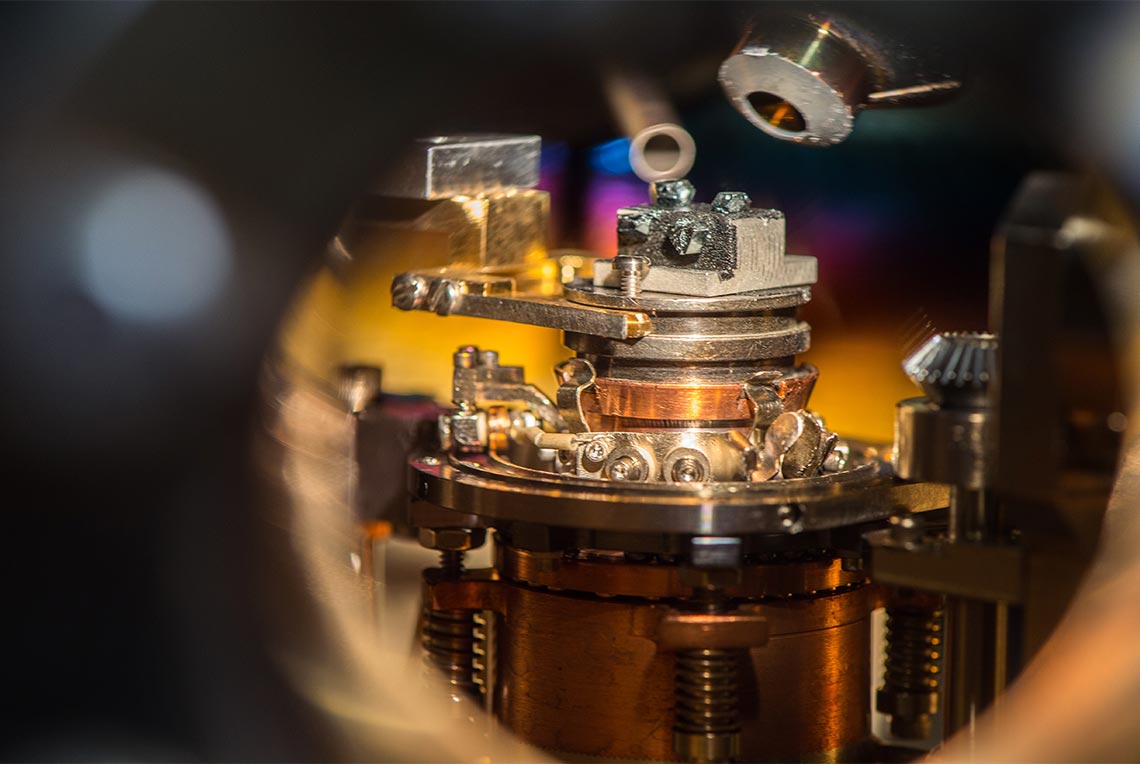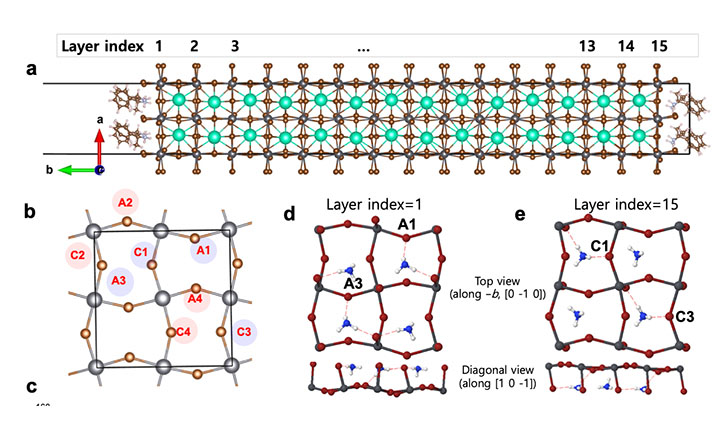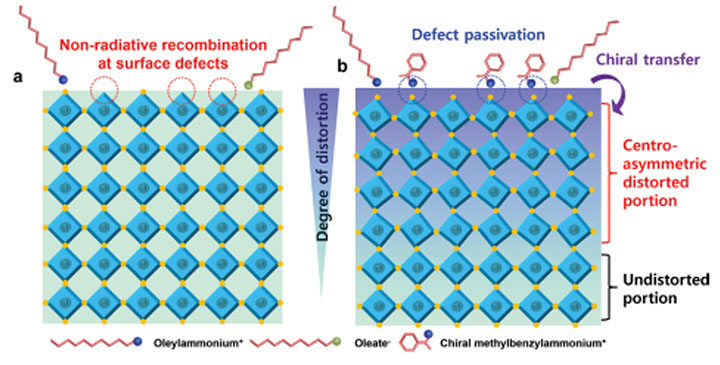

March 16, 2022
Colloidal metal halide perovskite nanocrystals (PNCs) provide an outstanding platform for exploring chirality-mediated electro-optical phenomena. This system combines the strong spin-orbit coupling and controllable Rashba-Dresselhaus splitting in metal-halide perovskites with the extensive tunability afforded by surface ligand attachment, which in this case can be chiral molecules. Chiral ligands attached to the surface of PNCs promote the controlled absorption and luminescence of circularly polarized light, which has been observed. However, the physics behind the mechanism(s) by which chiral ligands or the surrounding media impart chiroptical response in PNCs is still ambiguous, which, in this work, we aim to understand more thoroughly.
We studied how chiral methylbenzylammonium (R-/S-MBA) ligands structurally distort PNCs leading to chiroptical effects like circular dichroism, circularly polarized luminescence, and spin polarized carrier transport.
"Chiral transfer" can occur through either electronic state mixing from the perovskite semiconductors and chiral ligands or structural distortions from chiral attachment. The effects are difficult to isolate. Here, we determine that ligands create a structural distortion extending multiple unit cells from the surface attachment.
Joseph Berry
National Renewable Energy Laboratory
Jeffrey Blackburn
National Renewable Energy Laboratory
Matthew Beard
National Renewable Energy Laboratory
Volker Blum
Duke University
Joseph Luther
National Renewable Energy Laboratory

